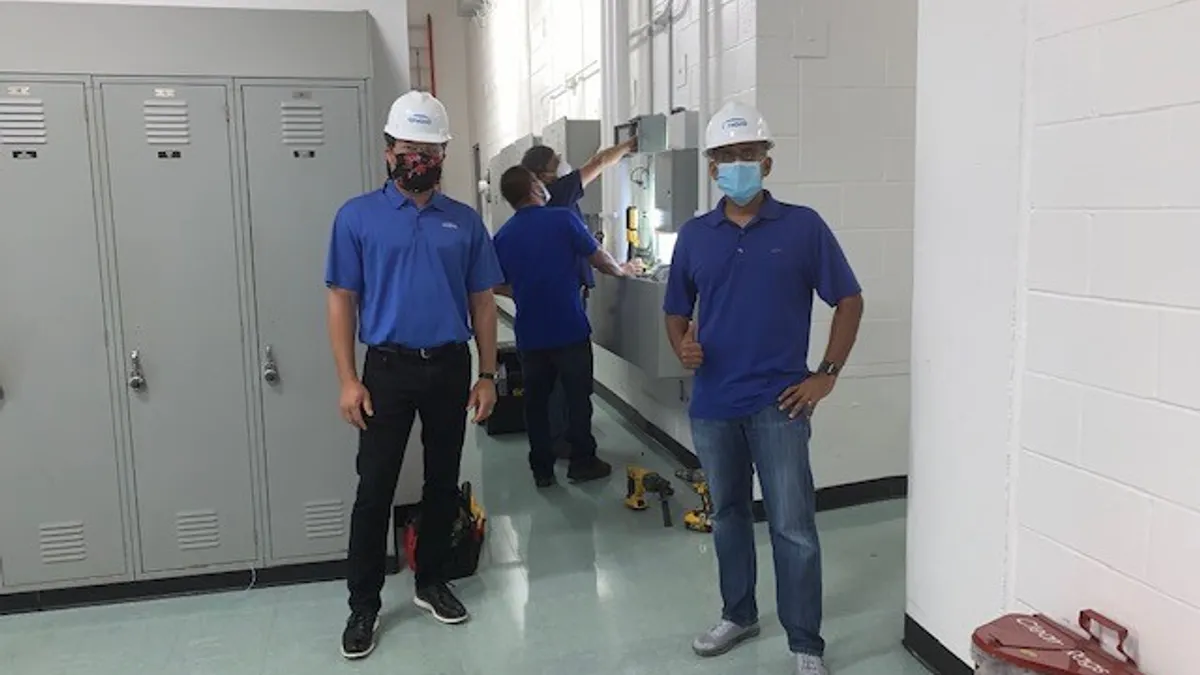Dive Brief:
-
RMI and 10 founding industry members launched a Virtual Power Plant Partnership intended to identify best practices and educate policy makers on the benefits of distributed resource aggregation.
-
Virtual power plants coordinate distributed energy resources such as EVs, batteries and rooftop solar. Initial research by RMI indicates that virtual power plants could reduce peak demand in the U.S. by 60 GW as soon as 2030.
-
RMI believes a focused effort to align industry segments, research and policy is needed to unlock this potential.
Dive Insight:
Education, policy and industry coordination may hold the keys to unlocking the full potential of a myriad of distributed energy resources in the U.S, according to a new coalition dedicated to advancing and scaling the virtual power plant concept.
RMI launched the initiative, called the Virtual Power Plant Partnership or VP3, with the backing of Ford, General Motors, Google Nest, OhmConnect, Olivine, SPAN, SunPower, Sunrun, SwitchDin and Virtual Peaker. General Motors and Google Nest provided the initial funding for the launch.
According to RMI, coordinating distributed energy resources by way of virtual power plants, which aggregate individual energy resources so they can work in tandem, could reduce energy demand in the U.S. by some 200 GW by 2050.
RMI also believes virtual power plants can help address current challenges such as maintaining the reliability of the electric grid and energy affordability, according to Mark Dyson, managing director at RMI.
“VP3 will empower individuals and businesses alike to strengthen and decarbonize their local grid with the goal of making energy more affordable for all,” Parag Chokshi, director of Google’s Nest Renew, said in a statement. “Because when we each do a little, it adds up to a lot.”
But while individual industries have done an excellent job advocating for various components of virtual power plants—think rooftop solar or electric vehicles for example—there’s a need for a coordinated industry effort backing virtual power plants as a whole, Dyson said.
VP3 will follow the tradition of other initiatives incubated at RMI, such as the Clean Energy Buyers Association, and aim to fill information gaps RMI and its partners believe stand in the way of greater virtual power plant adoption. The coalition will focus on educating industry stakeholders and policy makers about the benefits of, and best practices for operating, virtual power plants.
They may also intervene in dockets at FERC or state regulatory commissions to represent distributed energy resources while trying to address challenges such as proceedings that separate technologies, including smart meters and rooftop solar, into separate dockets.
“The solar industry trade organizations are a great example of how an industry group, focused on a specific opportunity, can make a real impact,” Dyson said. But for virtual power plants to work, he said, “it has to be a big tent. It can’t be a single technology like solar plus storage or EVs with bidirectional charging.”













